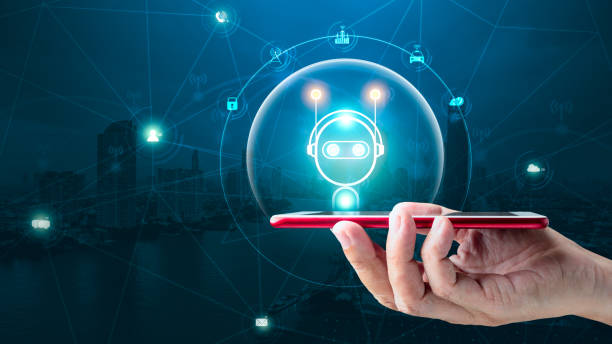The global chatbot market size is expected to be worth as much as $3.99 billion by 2030, according to Grand View Research’s latest data Conversational AI, or artificial intelligence, can be incredible fun. ChatGPT and Microsoft’s chatbot Bing search, have successfully positioned AI on almost everyone’s radar. Yet, there is more to this AI, than a chatty search engine or being the port of call for often trivial conversations. Microsoft, Google, OpenAI with its new GPT-4 and Meta are piecing together the next evolution of AI, which will have a bigger role in the apps you use. Applications will continue to be in focus, as conversational AI expands its horizons. (Representative Image) Applications will continue to be in focus, as conversational AI expands its horizons. (Representative Image) Microsoft has confirmed it will add a layer of AI to Word, PowerPoint, Outlook, Teams, and workplace apps including Viva — all part of the Microsoft 365 subscription – in a feature called ‘Copilot’. The functionality, which will vary for each app, includes generating pointers for upcoming meetings, creating draft documents with the ability to scan information from existing documents, analyse spreadsheets, draft email replies, and scan transcripts to summarise meetings. It isn’t difficult to peg this as a well-thought-out response to Google, which is putting together AI functionality in its Workspace apps. The company says it’ll be available to everyone by the end of this year. Microsoft is yet to confirm a roadmap for a commercial release. Google’s pitch with AI in Google Docs and other apps has a similar wide scope. As of now, the list includes drafting as well as replying to emails within Gmail, writing and proofreading documents, creating slideshows, and capturing notes in Meet meetings.

As We Have Seen Already With AI Chatbots.
they can often go wrong with facts or context. Late last year, Meta pulled the plug on Galactica AI three days after opening it to the public. It had responded to queries with inaccuracies and misinformation, citing fictitious research papers attributed to real authors. This was most likely a result of gaps in data sets or an incomplete ranking of responses. This is something tech giants continue to warn about. Google’s tentative steps with the Bard chatbot being a testament to the concern. “Our goal is to continue to be bold and responsible in our approach and partner with others to improve our AI models so they’re safe and helpful for everyone,” says Thomas Kurian, CEO, Google Cloud. Meta, earlier this year released LLaMA, or Large Language Model Meta AI to researchers. The company is not taking any risks after Galactica. “There is still more research that needs to be done to address the risks of bias, toxic comments, and hallucinations in large language models,” it said in a statement at the time. “Sometimes Copilot will be right, other times usefully wrong,” says Jared Spataro, corporate vice president, Modern Work & Business Applications at Microsoft, in a statement. The first glimpse of Copilot hints at a set of features which should automate certain time-consuming tasks, including document drafts, managing mailbox clutter, and decoding complex spreadsheets. The global chatbot market size is expected to be worth as much as $3.99 billion by 2030, according to Grand View Research’s latest data. Bing crossed 100 million daily active users, within the first two weeks of an invite-only release. This number will grow, with new Bing now integrated within the Edge browser app for Android and iPhone, as well as prominent integration on Windows PCs. OpenAI’s ChatGPT averages 13 million unique visitors a day, according to analytics firm Similarweb.

Applications Will Continue To Be in Focus, As Conversational AI Expands its Horizons.
OpenAI has rolled out the next iteration of its AI language model, GPT-4, which will become the foundation for ChatGPT and the new Bing. This iteration is, for all intents and purposes, an iterative update in terms of conversational skills. But it is a significant step forward in other respects, such as the ability to accept image inputs in addition to text and better performance in a number of benchmark tests. “It is encouraging to see a lot of emphasis on avoiding undesirable side effects and behavior. OpenAI evaluated GPT-4 for a wide range of risks such as hallucination and harmful content and claim that it is 82% less likely to respond to questions that are not allowed and reduces false positives,” Peter van der Putten, director AI Lab, Pegasystems and Assistant Professor at Leiden University, tells HT. OpenAI’s focus is on scaling, with the start-up confirming platforms such as Duolingo, Be My Eyes, Stripe, and Khan Academy, are already using GPT-4. Grammarly’s new AI proofreading tool will be available as a beta service, in April. Another OpenAI speech recognition project, Whisper, is being used to build tools that help add AI generated subtitles to video editing apps, such as DaVinci Resolve. Popular search engine and web browser app, DuckDuckGo, is using ChatGPT and Google-backed Anthropic’s language models for Duck Assist – this tool summarises information from Wikipedia, for a search you may have embarked on.

